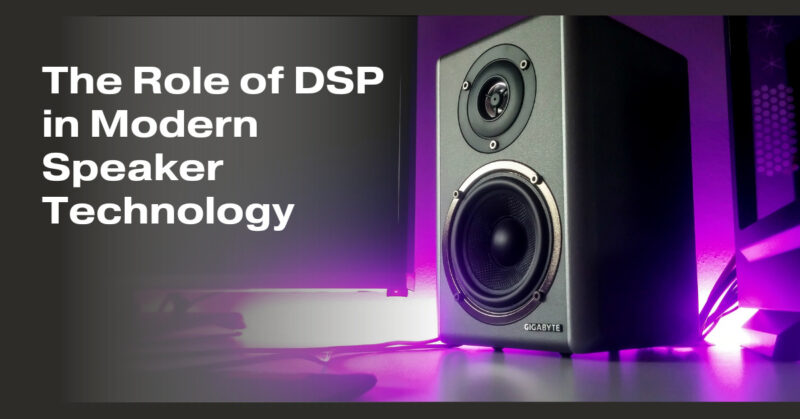Digital Signal Processing (DSP) has revolutionized modern speaker technology, enabling the creation of speakers that deliver exceptional sound quality, precision, and versatility. In this article, we’ll explore the crucial role of DSP in shaping the performance of contemporary speakers.
1. What is DSP?
DSP refers to the use of digital processing techniques to manipulate audio signals in real time. DSP chips and algorithms can enhance, modify, and optimize audio output, allowing for more accurate sound reproduction and advanced features.
2. Room Correction and Acoustic Optimization:
One of the most significant contributions of DSP to speaker technology is room correction and acoustic optimization. Many speakers now come equipped with built-in DSP systems that can:
- Analyze Room Acoustics: DSP can measure the acoustic characteristics of the room and the speaker’s placement within it. This information helps identify issues like reflections and resonances.
- Correct Frequency Response: DSP can adjust the speaker’s output to compensate for room-related issues. This correction process aims to flatten the frequency response, ensuring that the listener hears sound as intended by the audio engineer.
- Reduce Distortion: DSP can monitor and reduce distortion caused by room interactions, enhancing the clarity and fidelity of audio playback.
3. Active Crossovers:
Traditional passive crossovers inside speakers divide audio signals into frequency bands for different drivers (e.g., woofer, tweeter). DSP allows for the implementation of active crossovers, which are more precise and flexible. Benefits of active crossovers include:
- Improved Driver Integration: Active crossovers can precisely match drivers’ responses, leading to smoother transitions between frequency bands and reduced phase issues.
- Real-Time Adjustments: DSP-based crossovers can be adjusted in real time, allowing for fine-tuning based on room acoustics and listener preferences.
4. Speaker Protection and Optimization:
DSP can actively monitor and protect speaker components from damage, particularly in high-volume or low-frequency situations. Features may include:
- Limiters: DSP can implement limiters to prevent drivers from overexcursion or overheating when driven too hard.
- Thermal Management: Temperature sensors can be used to monitor voice coil temperatures and adjust power delivery to prevent overheating.
5. Advanced Equalization:
DSP enables precise equalization to tailor the speaker’s sound characteristics. This goes beyond basic tone controls and can include parametric or graphic equalization, allowing users to fine-tune audio to their preferences.
6. Active Noise Cancellation:
Some speakers use DSP for active noise cancellation. This technology can analyze ambient noise and generate anti-phase sound waves to cancel out unwanted background noise, providing a quieter listening experience.
7. Versatility and Upgradability:
Speakers with DSP capabilities can receive firmware updates to improve performance or add new features, ensuring that your investment remains relevant and up-to-date.
8. Personalized Sound Profiles:
DSP can store and recall user-defined sound profiles, allowing listeners to switch between different presets tailored for specific music genres or applications.
9. Wireless Connectivity and Networking:
Many wireless and networked speakers use DSP for seamless integration with mobile devices, home networks, and streaming services. This enables features like multi-room audio and voice control.
10. Limitless Possibilities:
DSP technology continues to evolve, introducing new possibilities for speaker design and functionality. As DSP chips become more powerful and cost-effective, we can expect even more innovative applications in the future.
In conclusion, DSP has become an integral part of modern speaker technology, enhancing audio quality, room compatibility, and versatility. Whether you’re an audiophile, a home theater enthusiast, or simply a music lover, speakers equipped with DSP can offer a listening experience that’s both precise and adaptable to your unique preferences and listening environment.

